
BIOCONJUGATE CHEMISTRY
metrics 2024
Innovating Connections Between Chemistry and Life
Introduction
BIOCONJUGATE CHEMISTRY, published by the American Chemical Society, is an esteemed journal that has been at the forefront of innovative research since its inception in 1973. With an impressive impact factor and a robust reputation, it occupies the Q1 category in fields such as Bioengineering, Biomedical Engineering, Biotechnology, Organic Chemistry, Pharmaceutical Science, and Pharmacology, making it a vital resource for researchers, professionals, and students alike. Its rigorous peer-reviewed articles explore the diverse and rapidly advancing realm of bioconjugate chemistry, offering pivotal insights into applications that bridge chemistry with biology. Though not an Open Access journal, it ensures wide distribution through various academic platforms, making critical research accessible to the scientific community. With its high Scopus rankings, specifically Rank #23 in Organic Chemistry and Rank #25 in Pharmaceutical Science, the journal exemplifies excellence in scientific communication and serves as an essential platform for the dissemination of groundbreaking findings in the interdisciplinary field of bioconjugates.
Metrics 2024
 1.08
1.08 4.00
4.00 4.30
4.30 192
192Metrics History
Rank 2024
Scopus
IF (Web Of Science)
JCI (Web Of Science)
Quartile History
Similar Journals
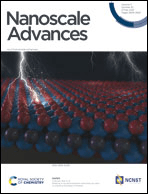
Nanoscale Advances
Advancing the Frontiers of Nanoscience.Nanoscale Advances, published by the Royal Society of Chemistry, stands out as a leading open-access journal dedicated to advancing the field of nanoscience and nanotechnology since its inception in 2018. With a specialized focus on areas such as atomic and molecular physics, bioengineering, chemistry, and materials science, this journal has consistently achieved top-tier rankings across several categories, reflecting its high-impact contribution to research and innovation. Currently classified in the Q1 quartile for both Atomic and Molecular Physics and Chemistry (Miscellaneous), and Q2 for Bioengineering, its prestige is underscored by impressive Scopus rankings, including a notable 34th position in General Engineering. With its commitment to disseminating high-quality research, Nanoscale Advances serves as an invaluable resource for researchers, professionals, and students alike, fostering collaboration and scholarly exchange in the rapidly evolving landscape of nanotechnology.

Materials Today Nano
Connecting Researchers to the Latest in Nano-Materials AdvancementsMaterials Today Nano, published by Elsevier, is a premier academic journal dedicated to the forefront of nano-materials research, encompassing innovations and advancements in biomaterials, condensed matter physics, electronic, optical, and magnetic materials, as well as materials chemistry. With an impressive Q1 ranking across multiple categories, including biomaterials and materials chemistry, this journal serves as a essential platform for researchers, professionals, and students aiming to contribute to and stay informed on cutting-edge developments that push the boundaries of materials science. Its open access model allows for wider dissemination of high-impact findings, ensuring that the research reaches a global audience. Operating from the United Kingdom, Materials Today Nano plays a vital role in fostering interdisciplinary collaboration and advancing scientific understanding in this rapidly evolving field.
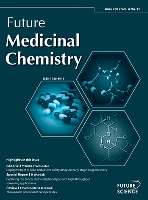
Future Medicinal Chemistry
Unveiling cutting-edge discoveries in medicinal chemistry.Future Medicinal Chemistry is a premier journal dedicated to the rapidly evolving fields of drug discovery, pharmacology, and molecular medicine. Published by Newlands Press Ltd in the United Kingdom, this journal has garnered significant attention within the academic community, evidenced by its 2023 category rankings in Scopus, placing it in the Q2 quartile for Drug Discovery and the Q3 quartiles for both Molecular Medicine and Pharmacology. With an ISSN of 1756-8919 and an E-ISSN of 1756-8927, Future Medicinal Chemistry has been a cornerstone of scholarly discourse since its inception in 2009, continuously contributing to the advancement of knowledge and discussion in medicinal chemistry. The journal is committed to publishing high-quality, peer-reviewed research that addresses the challenges and innovations in drug development and therapeutic strategies, making it an essential resource for researchers, professionals, and students seeking to stay at the forefront of these critical fields. Engage with the latest findings and methodologies that shape the future of medicine by exploring the wealth of information offered within Future Medicinal Chemistry.
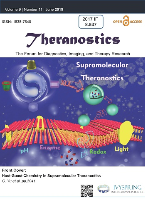
Theranostics
Exploring the Intersection of Therapy and Diagnostics.Theranostics is a premier journal in the field of Medicine and Pharmacology, published by IVYSPRING INT PUBL. With its commitment to open access since 2011, it facilitates the widespread dissemination of innovative research, fostering collaboration and advancements in therapeutic diagnostics. The journal proudly holds a Q1 ranking in both Medicine (Miscellaneous) and Pharmacology, Toxicology and Pharmaceutics, as of 2023, showcasing its esteemed position within the scientific community. Recognized globally, it ranks in the top 1%, with Scopus rankings placing it as 4th out of 398 in Medicine and 1st out of 43 in Pharmacology. Theranostics serves as a crucial platform for researchers, professionals, and students to explore cutting-edge developments as it converges multidisciplinary approaches to enhance patient care and treatment efficacy. With a focus on bridging experimental research and clinical applications, the journal is instrumental in shaping future therapies and diagnostic strategies.
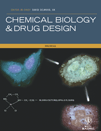
Chemical Biology & Drug Design
Bridging theory and practice in chemical biology and pharmacology.Chemical Biology & Drug Design, an esteemed publication by WILEY, serves as a vital platform for the dissemination of pioneering research in the interdisciplinary fields of biochemistry, drug discovery, molecular medicine, organic chemistry, and pharmacology. With a dedicated commitment to advancing the understanding of chemical interactions and drug development, this journal not only fosters innovation but also bridges the gap between theoretical research and practical applications. It boasts an impressive impact factor and is recognized in the 2023 category quartiles as Q3 in Biochemistry and Molecular Medicine, and Q2 in Drug Discovery, Organic Chemistry, and Pharmacology, indicating its relevance and influence in these crucial areas. The journal’s rankings across various Scopus categories further solidify its position as a reputable resource for researchers, professionals, and students striving to stay at the forefront of medicinal chemistry and drug design. While primarily traditional access-based, the journal's evolving scope from 2006 to 2024 ensures an ongoing contribution to essential scientific dialogue, making it an indispensable read for those committed to advancing health sciences.
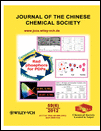
JOURNAL OF THE CHINESE CHEMICAL SOCIETY
Connecting Researchers with Pioneering DiscoveriesJOURNAL OF THE CHINESE CHEMICAL SOCIETY, published by WILEY-V C H VERLAG GMBH, is a vital resource in the field of chemistry, focusing on a broad array of topics pertinent to general chemistry and its advancing sub-disciplines. Established in 1954 and running through 2024, this journal serves as a significant platform for the dissemination of high-quality research, showcasing innovative findings and developments within the chemical sciences. With its Q3 category ranking and positioning at Rank #203 in General Chemistry per Scopus, it reflects the journal's commitment to research excellence and impact. While not an open-access publication, it ensures accessibility to a global audience, making it an essential tool for researchers, professionals, and students alike seeking to stay informed and engaged in the evolving landscape of chemistry.
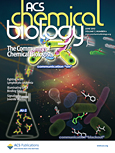
ACS Chemical Biology
Illuminating the Pathways of Biochemical ResearchACS Chemical Biology is a premier journal published by the American Chemical Society, dedicated to advancing the understanding of the chemical underpinnings of biological systems. With an ISSN of 1554-8929 and a distinguished track record since its inception in 2006, this journal provides a vital platform for the dissemination of high-quality research in the realms of biochemistry and molecular medicine, achieving a prestigious Q1 ranking in these categories as of 2023. In an era where interdisciplinary approaches are crucial, ACS Chemical Biology fosters collaboration among chemists and biologists, reflecting a steadfast commitment to exploring the chemical processes that govern life. Although it does not operate under an open-access model, the journal maintains a rigorous peer-review process, ensuring the publication of influential studies that shape the future of chemical biology. With an increasing impact factor and a focus on innovative research, ACS Chemical Biology remains an authoritative resource for researchers, professionals, and students eager to engage with cutting-edge findings in this dynamic field.

RSC Chemical Biology
Shaping the Future of Scientific Discourse in Chemical BiologyRSC Chemical Biology is a prestigious journal published by the Royal Society of Chemistry, providing a significant platform for researchers in the fields of biochemistry, genetics, and molecular biology. Launched in 2020, the journal aims to disseminate high-quality research that bridges the gap between chemistry and biology, promoting interdisciplinary studies and innovations that are essential for advancements in life sciences. With an emerging impact factor and ranking in the top quartile (Q1) for multiple categories such as Biochemistry and Molecular Biology, RSC Chemical Biology holds a prominent position in the academic landscape, evidenced by its Scopus rankings placing it in the top 20% and 30% of its respective fields. Although it does not operate under an open-access model, the journal's commitment to accessibility is reflected in its rigorous peer-review process and its role in shaping future scientific discourse. Research published in this journal is vital for contributing to our understanding of complex biological processes and fostering innovations that can lead to real-world applications.
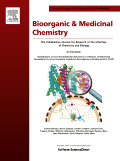
BIOORGANIC & MEDICINAL CHEMISTRY
Advancing the Frontiers of Biochemical ResearchBIOORGANIC & MEDICINAL CHEMISTRY, published by Pergamon-Elsevier Science Ltd, is a prominent journal in the fields of biochemical research and drug discovery, with an ISSN of 0968-0896 and an E-ISSN of 1464-3391. Established in 1993, it has garnered respect and recognition, evidenced by its categorization in various quartile ranks across 2023, including Q2 in Clinical Biochemistry and Pharmaceutical Science. It holds significant Scopus rankings, placing it in the 75th percentile in Pharmaceutical Science and 74th percentile in Organic Chemistry, highlighting its influential contributions to ongoing research and developments. This journal provides a platform for disseminating advancements in bioorganic and medicinal chemistry, focusing on innovative methodologies, therapeutic advancements, and molecular pharmacology. Although it does not follow an open-access model, it remains a key resource for researchers, professionals, and students aiming to stay at the forefront of scientific discovery in the UK and beyond. The journal’s commitment to enhancing knowledge within the biomedical community makes it an essential read for those passionate about this dynamic field.
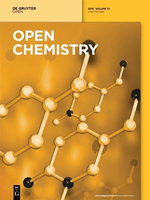
Open Chemistry
Exploring New Horizons in Chemical ResearchOpen Chemistry, published by DE GRUYTER POLAND SP Z O O, is a distinguished peer-reviewed journal that has been serving the global chemistry community since its inception. With an ISSN of 2391-5420 and an E-ISSN also of 2391-5420, this open-access journal has been accessible to researchers and practitioners alike since 2015, ensuring a wide dissemination of high-quality research findings. Located in Germany, specifically at BOGUMILA ZUGA 32A STR, 01-811 WARSAW, MAZOVIA, POLAND, Open Chemistry aims to publish innovative research across various chemical disciplines, with special attention to miscellaneous chemistry and materials chemistry. It is currently ranked in the Q3 category for both fields as of 2023, reflecting its solid standing within the academic community, with specific ranks of 187/408 in General Chemistry and 153/317 in Materials Chemistry, corresponding to respective percentiles of 54 and 51. Open Chemistry not only enhances the accessibility of cutting-edge research but also serves as a vital resource for students, professionals, and scholars seeking to advance their knowledge in the rapidly evolving landscape of chemical sciences.